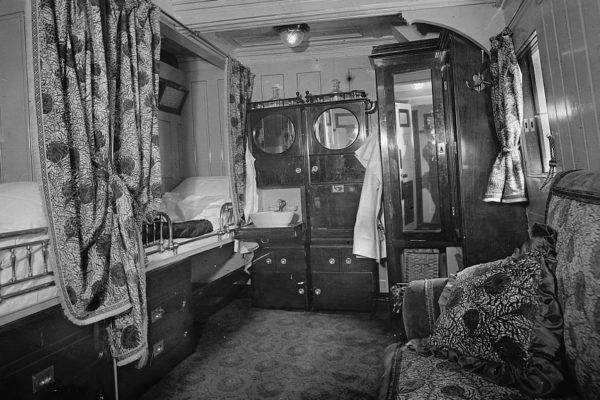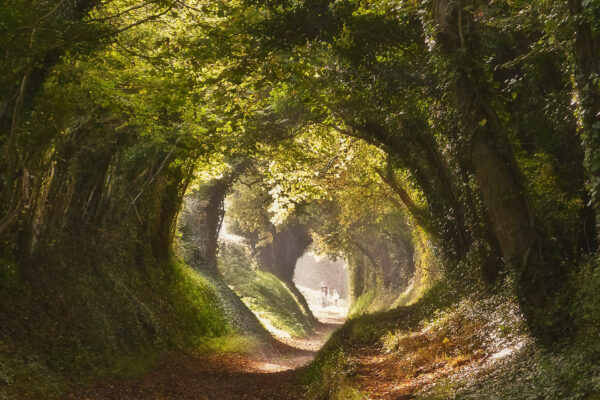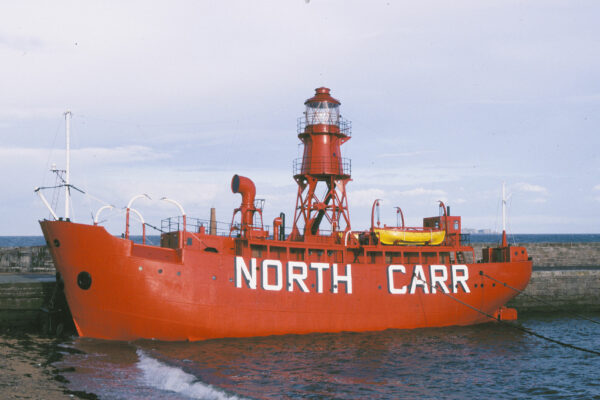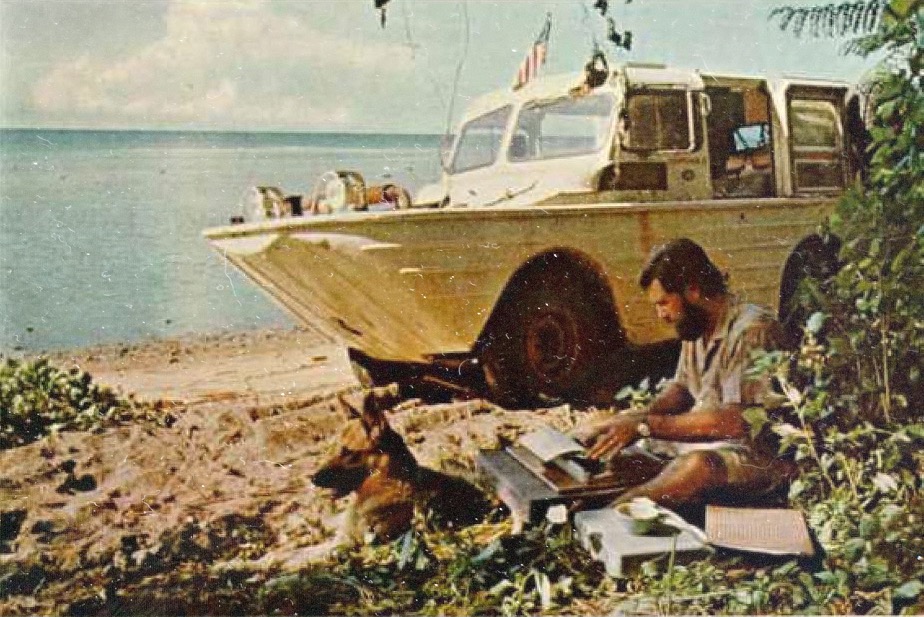
My heroes are up there with the Amelia Earharts, Aloha Wonderwells, Ernest Hemingways, and the Jacques Cousteaus of this world; names that conjure up the romance of adventure and inspire us to take risks in an age where travel has been made too easy. But in all my travel reading, I’d never heard of the honeymooners that navigated the world in an amphibious World War II jeep. And today, we discover the stories of not just one but two couples who did just that. Introducing my newest heroes, the Carlins and the Schreiders…
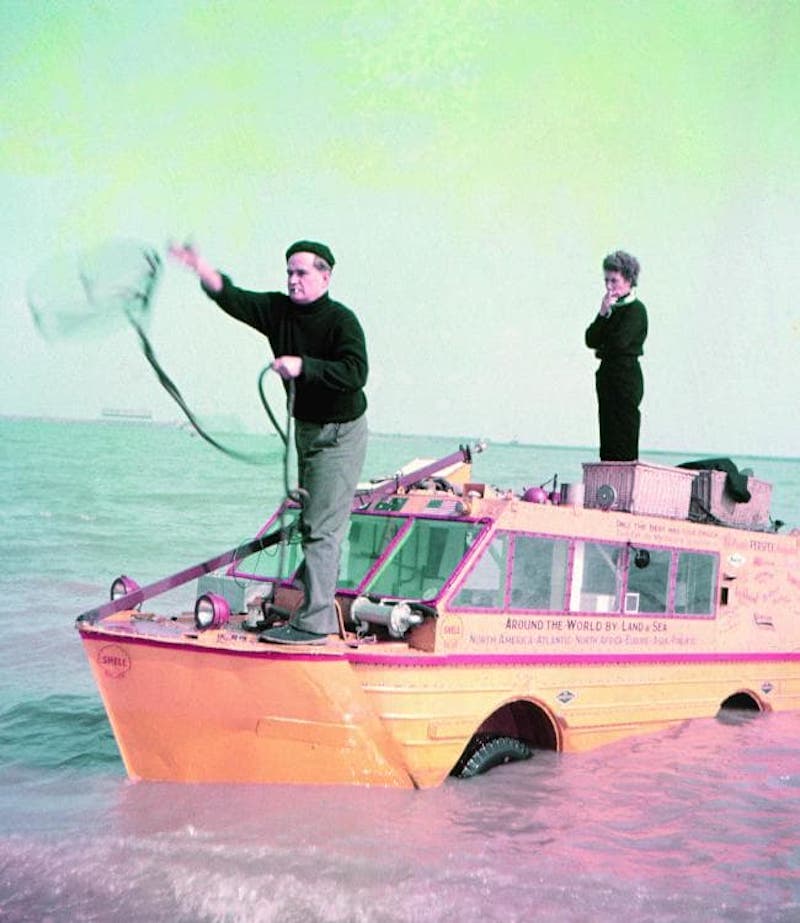
We begin with Ben Carlin, an Australian adventurer who became the first and only person to circumnavigate the entire earth in an amphibious jeep. He’d first discovered the prototype vehicle during his time in the military, and was often teased by fellow soldiers for suggesting that “with a bit of titivation, you could go around the world in one of those things”. In the end, it was his young American wife Elinore, who was brave enough to accompany him for much of the decade-long, 50,000 mile journey around the world.
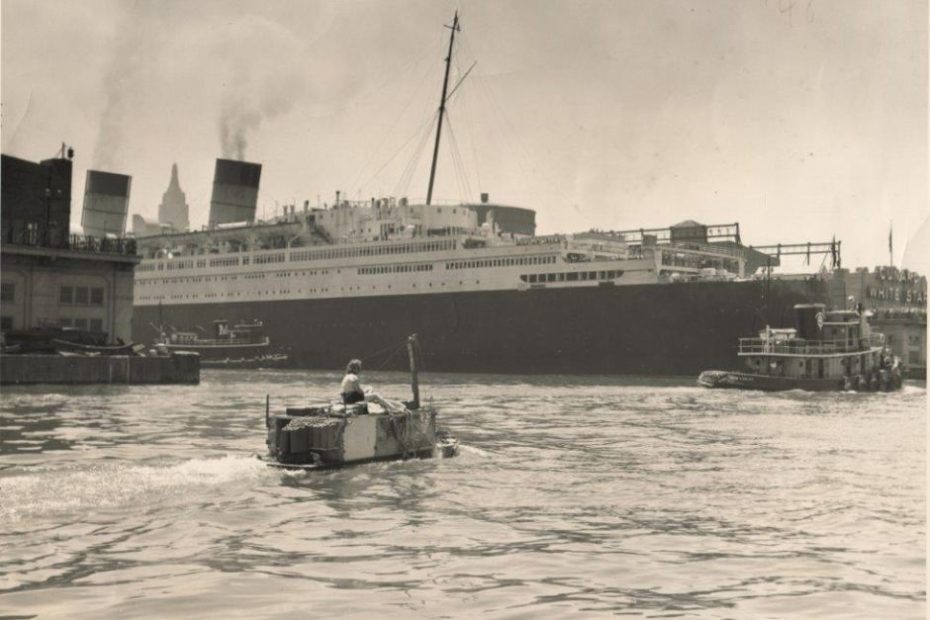
Carlin proposed that the couple honeymoon by first crossing the Atlantic in a DIY customised Ford GPA, a half-ship, half-Jeep contraption they purchased at auction and christened the “Half-Safe”
They began their journey in 1951, a story that would include numerous failed attempts and near-death experiences…
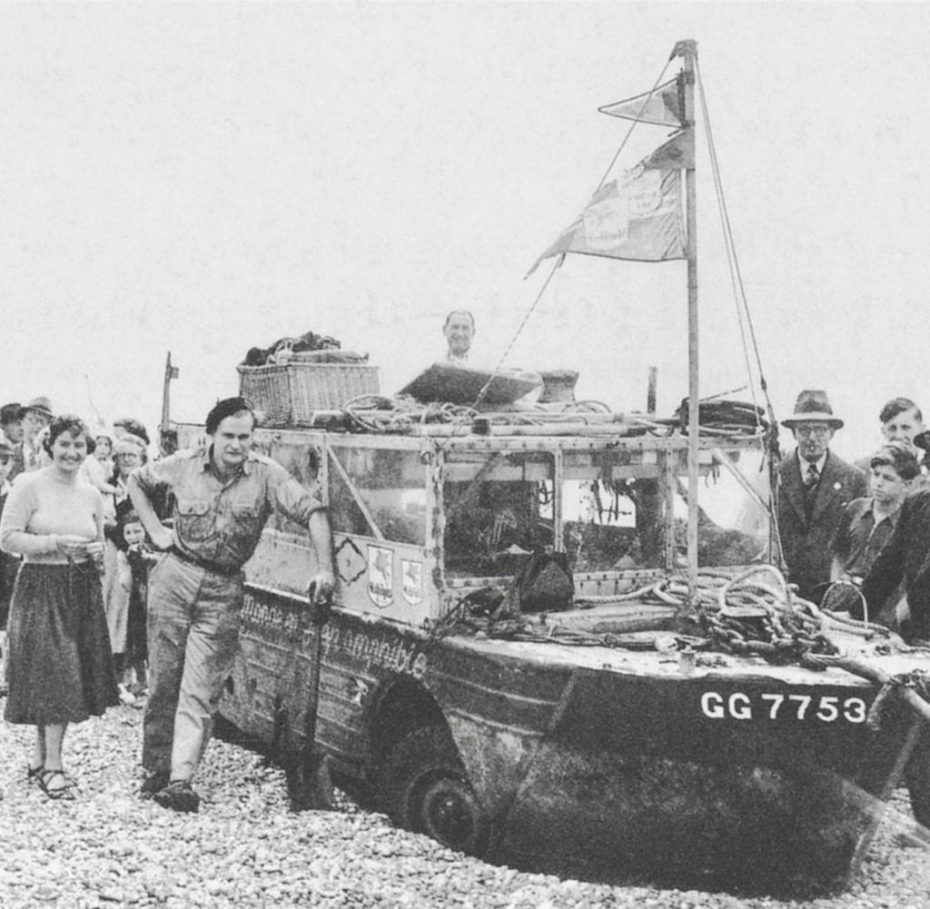
They were once rescued 230 miles off New York by an oil tanker after drifting aimlessly for 10 days having lost a propeller, unable to steer or navigate. But according to a message Carlin radioed from the tanker, the couple “drifted and fished”, enjoying a “pleasant life, cheaper than Atlantic City”.
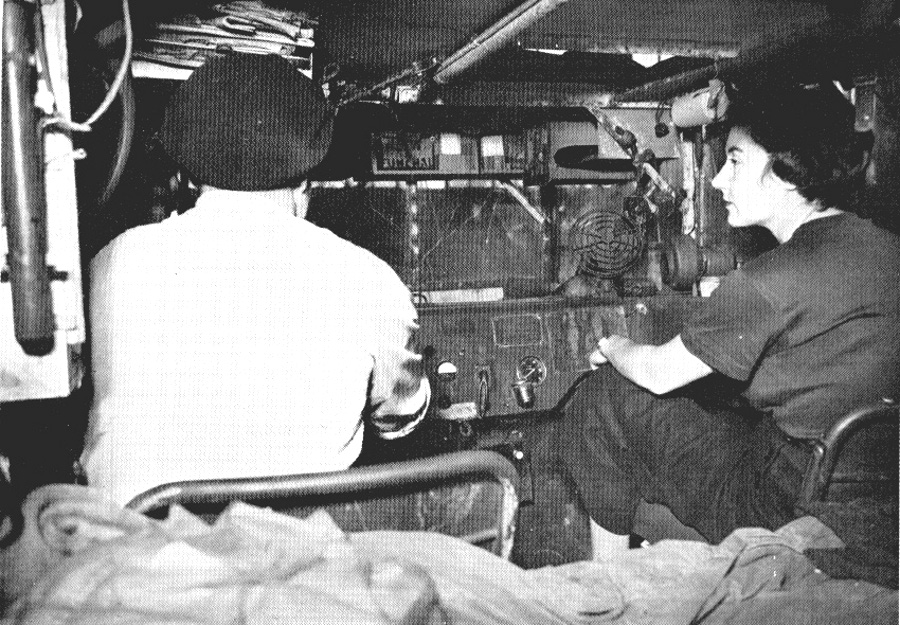
Throughout the journey through Nova Scotia, the Carlins suffered from severe hallucinations, including one instance where Ben had jerked awake to find himself 60° off course. In the deserts of the Middle East, Half-Safe had to be driven exclusively at night as daytime temperatures reached 170 °F (77 °C) within the vehicle’s cabin.
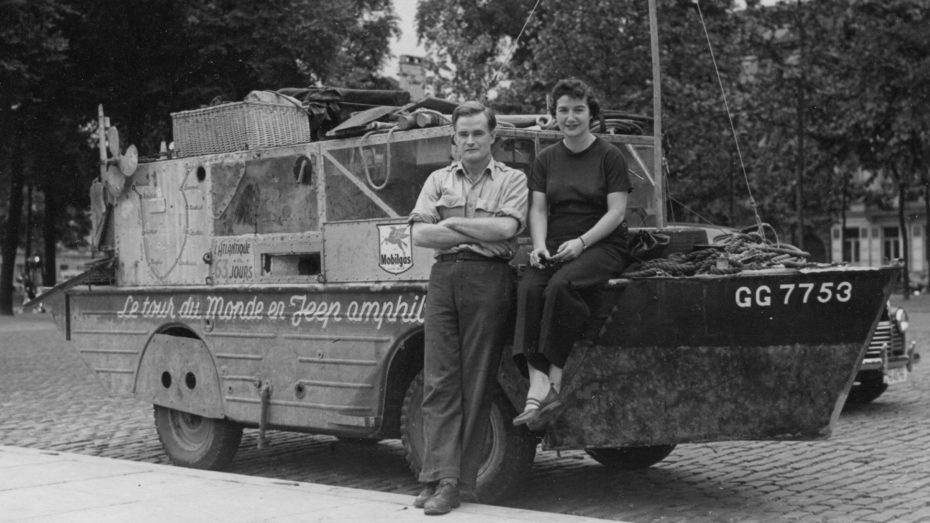
They sailed across the Bosphorus to Asia Minor, before progressing through Syria, Jordan, Iraq, Iran, and Pakistan to Calcutta. Carlin later noted: “the 2000 miles across the Atlantic from Nova Scotia to the Azores were in many ways much less worrying than a similar distance covered on murderous roads in Persia”
To raise money for the continuation of the journey, the Carlins had the idea of exhibiting Half-Safe in department stores throughout Europe. Ben also penned a book chronicling the first half of their journey, Half Safe: Across the Atlantic by Jeep, which sold 32,000 copies and was translated into five languages. By the time they reached Australia for a renewed fundraising stint, Elinor had grown weary of the long travel and constant seasickness and decided to bow out of the trip to return to the United States.
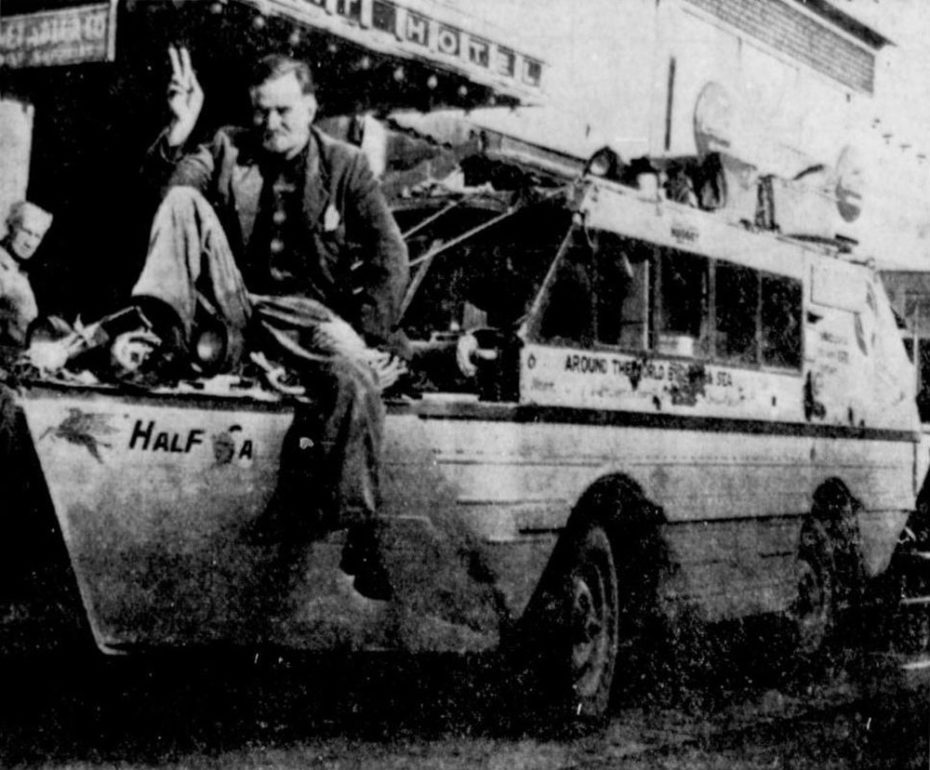
Ben continued solo but later found new travel companions along the way as he travelled the Far East, through Japan and then to Alaska. Towards the end of the journey, he arrived in San Francisco, where he met his wife for the first time in two years. By 1958, he’d completed his circumnavigation of the globe, arriving back at his starting point in Montreal after 10 years, over 17,000 kilometres at sea and 62,000 kilometres on land. Unfortunately, I have to report that the Carlin’s marriage did not survive the epic journey and the couple filed for divorce in 1955.
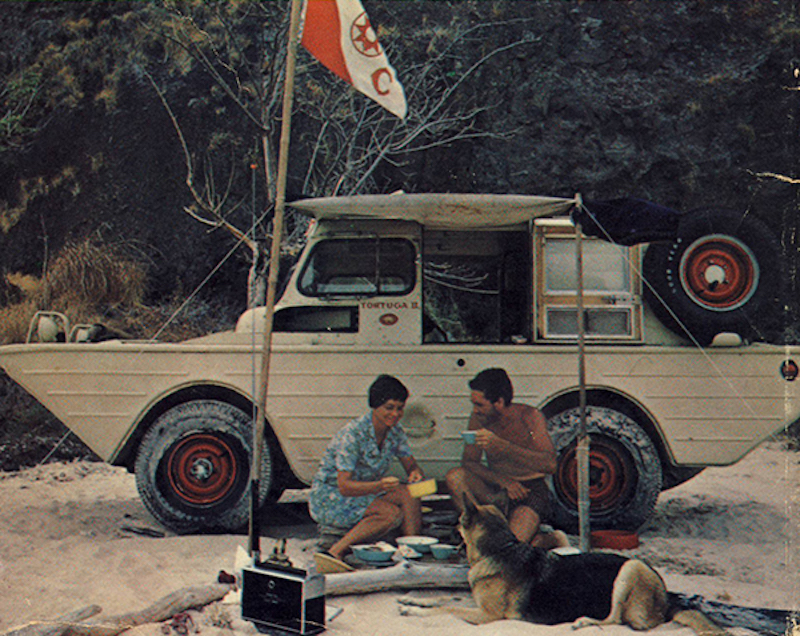
If you’re looking for a happier ending however, it’s with the Schreiders. Helen and Frank, along with their German Shepherd Dinah (pictured above), set off on a belated honeymoon in an amphibious World War II Jeep. The year was 1951, the same year the Carlins began their voyage, although there is no record of either couple knowing of the other’s endeavour, and the Schreiders were not out to set any world records, but rather to document and learn from the places and cultures they visited via their unusual mode of transport.
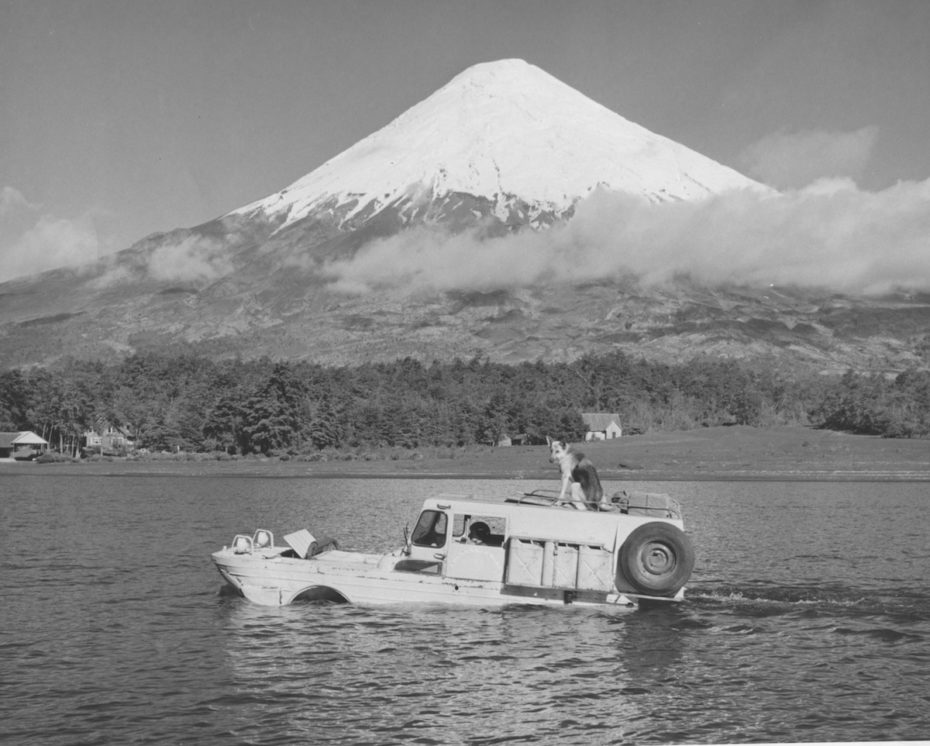
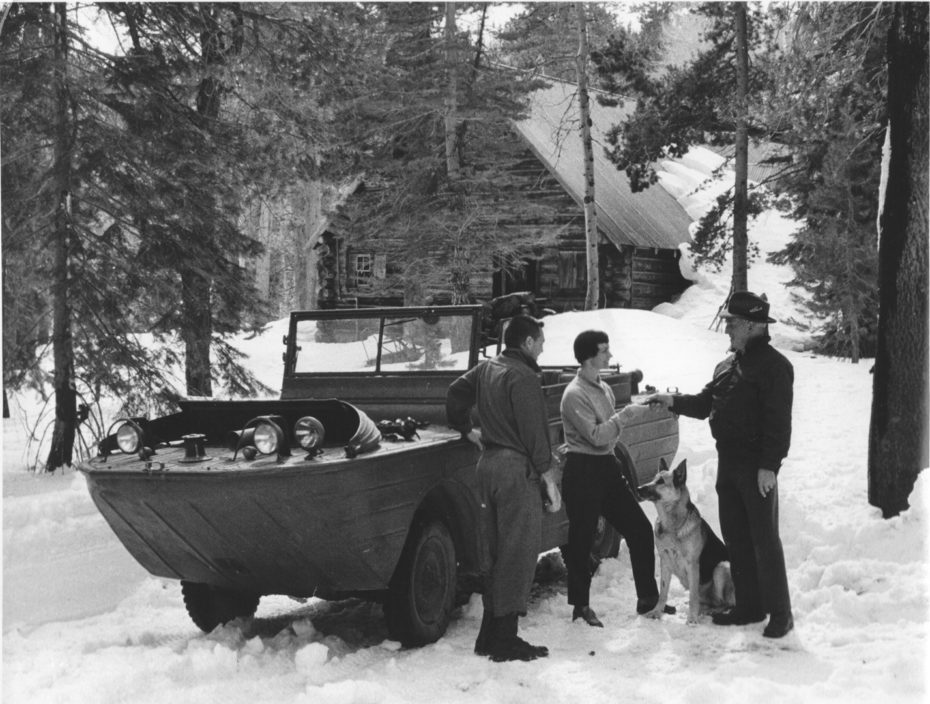
The couple found their rusty old jeep in a junkyard and Frank repaired the engine while Helen designed the interior living space. Months later, christened with a Coke bottle, “La Tortuga,” the two-and-a-half ton turtle was born. The craft was launched from a calm bay in Los Angeles, headed south. But they too, had a rough ride ahead…
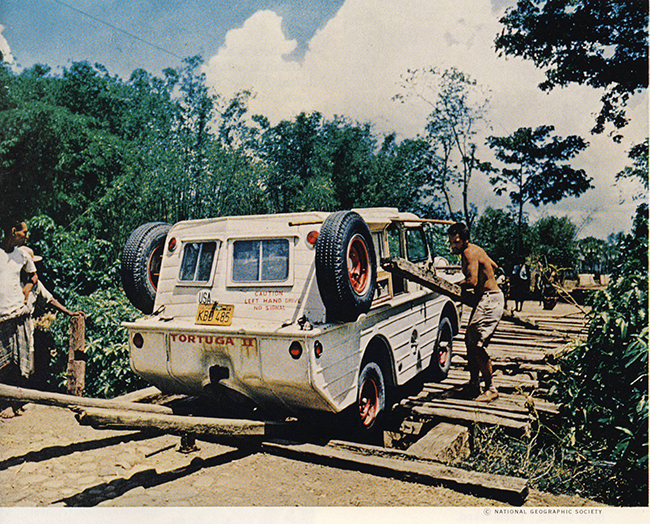
At the southern end of Mexico they travelled 200 miles through thick jungle, driving over oxcart trails through a tangle of trees and vines, and when they reached the coastline, the Tortuga launched into twenty-foot waves, nearly ending their journey before it truly began. On another occasion, they took directions from a friendly fisherman, hoping to find a shortcut, but instead of a meeting a road, they were led to an abandoned railway track. In desperation, they drove their amphibious Jeep 35 miles on the railroad, almost destroying the vehicle.
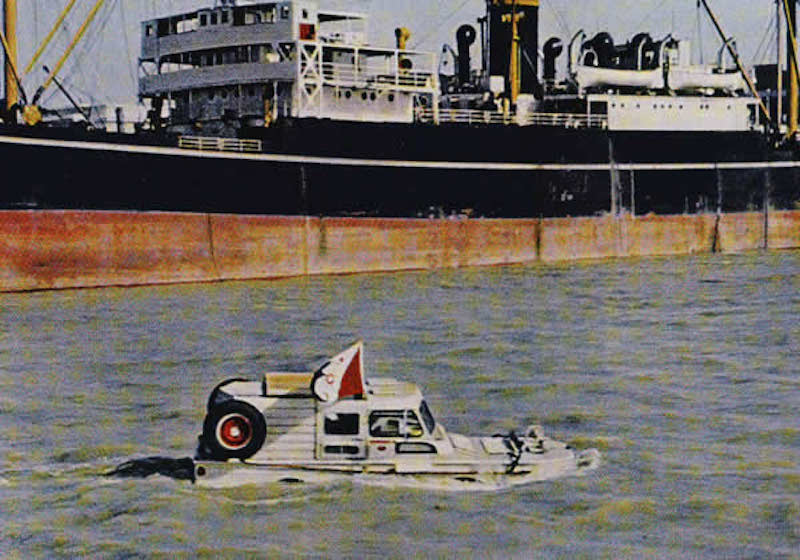
As they passed through the Panama Canal, despite being warned against it by the Admiral in charge, La Tortuga floated like a toy boat alongside the giant cargo ships. After making it through the Caribbean, the admiral recommended Frank to the prestigious Explorers Club. In the 1950s, the organisation was still strictly a gentleman’s club, and it wasn’t until 59 years later in 2015 that Helen would finally be admitted, not just as a member, but as a Fellow National of the club.
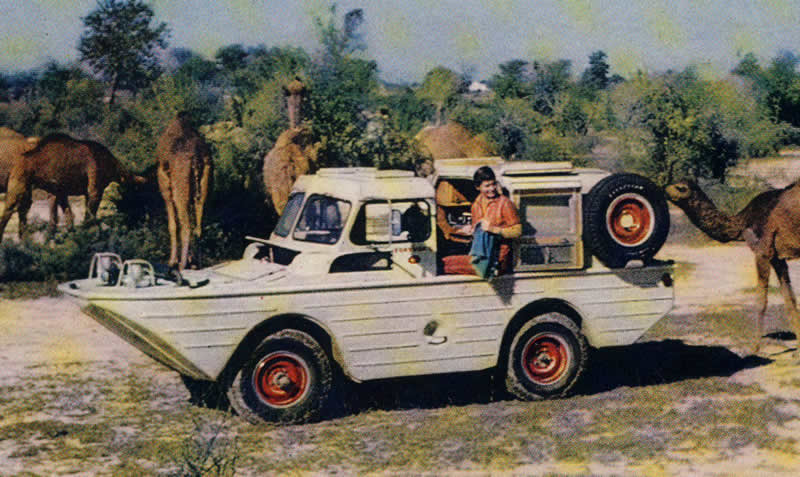

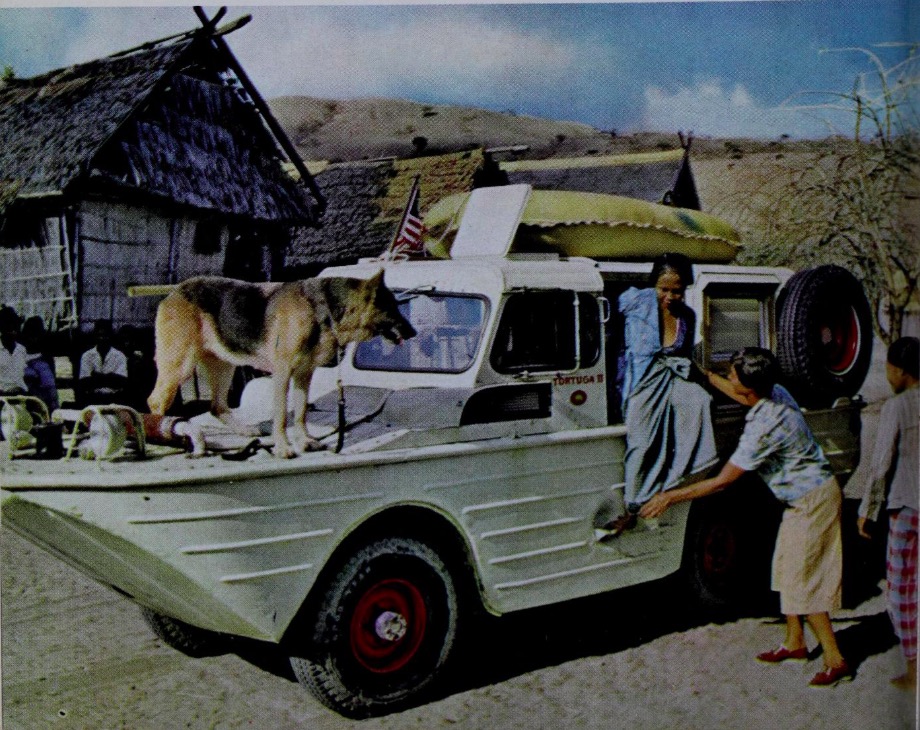
They were the first people to travel the length of the Americas solely by means of their own power and after their first independent journey from Alaska to Argentina, the Schreiders were hired as staff writers by the National Geographic.
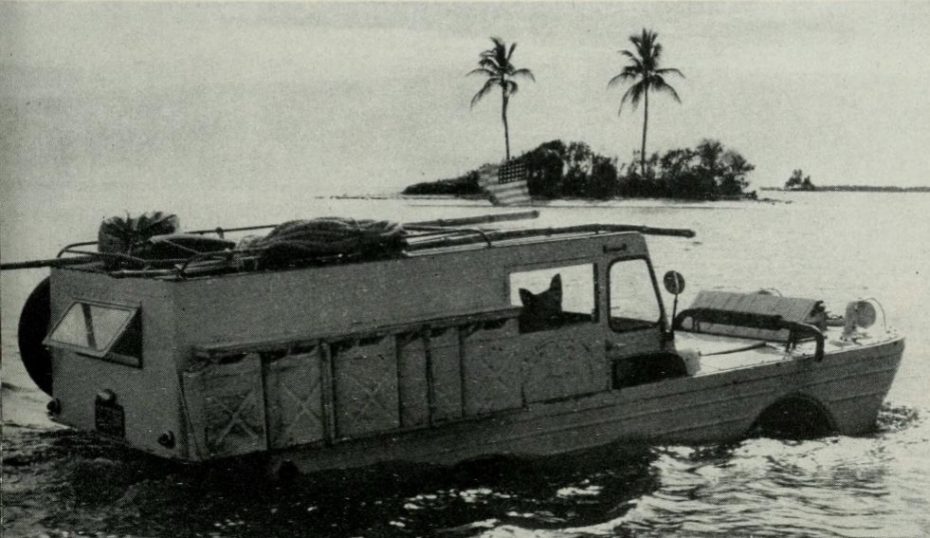
In the San Blas Islands, they stayed with the isolated natives who had first mistaken their jeep for a sea monster. The couple later drove it all the way to the remote ruins of Machu Picchu, where they found it deserted but for themselves. And in Ushuaia, La Tortuga was the first vehicle to ever arrive on the island on its own power, for which it was issued an Ushuaia license plate #1.
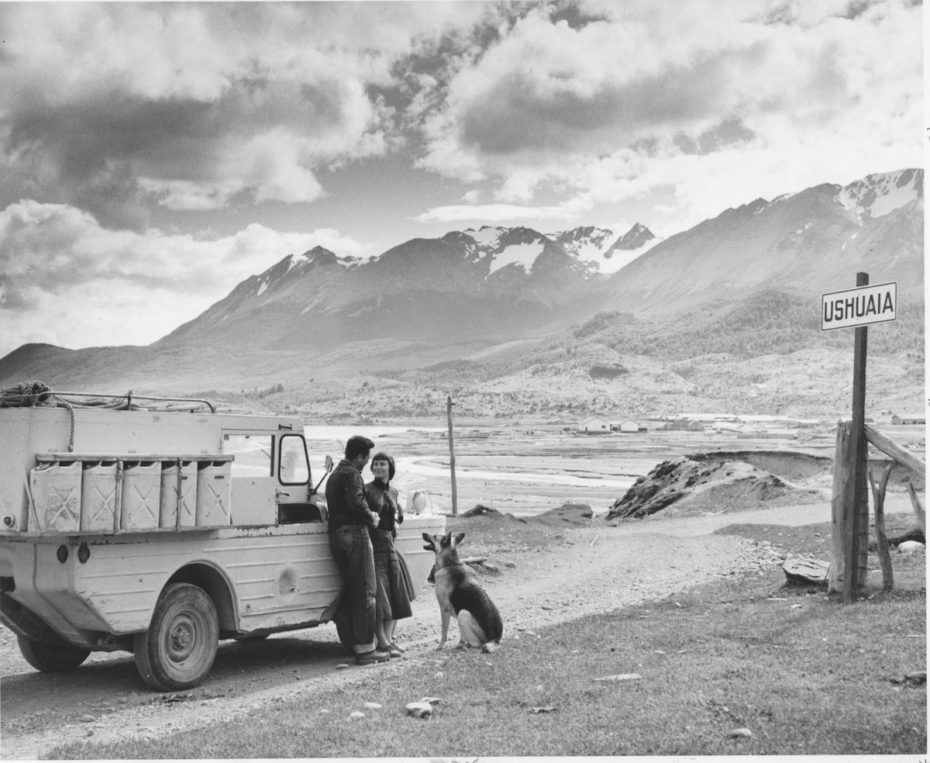
A journalist once wrote that “all other travel settings on the surface of this earth must be anti-climactic after the Schreider voyage” and that their amphibious jeep, “La Tortuga,” should be placed in the Smithsonian Museum “right along with the Spirit of St. Louis and other dramatic symbols of ‘famous first'”.
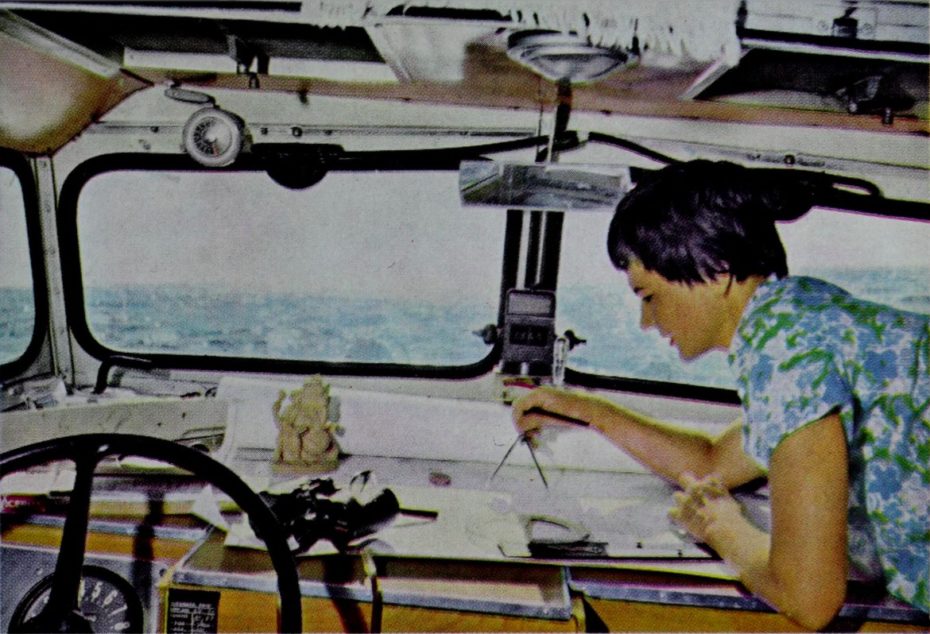
The National Geographic however, took less notice of the Schreiders as pioneering explorers. In 1970, the couple navigated and mapped the entire Amazon river, concluding that it was longer than the Nile (previously acknowledged as the longest river in the world). Frank and Helen were more than excited to present their findings upon their return but were curtly dismissed by their employer of 15 years. “Everyone knows the Nile is the longest river in the world,” they were told by the head cartographer. The Schreiders resigned from the company, and published their research in their own book, Exploring the Amazon. The National Geographic finally acknowledged that the Amazon is longer than the Nile and that it is the longest river in the world– 37 years later.
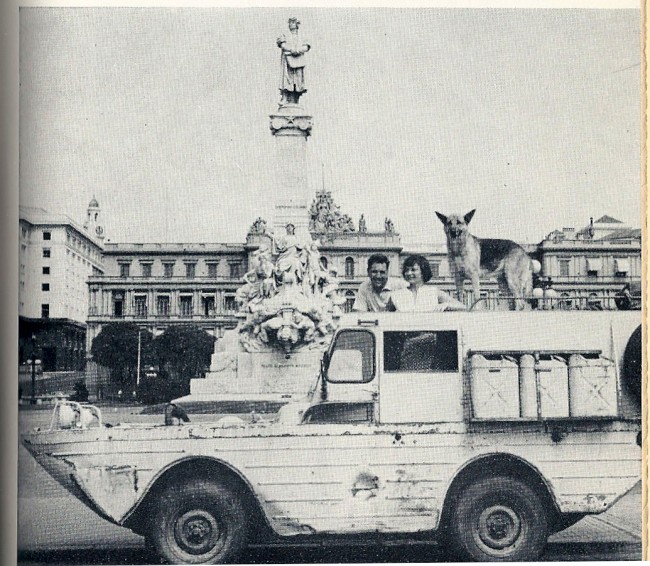
Helen and Frank worked as a team and lived for periods of time in nearly 50 countries on five continents. They wrote three books together, featuring Helen’s own illustrations and their photographs from their expeditions.
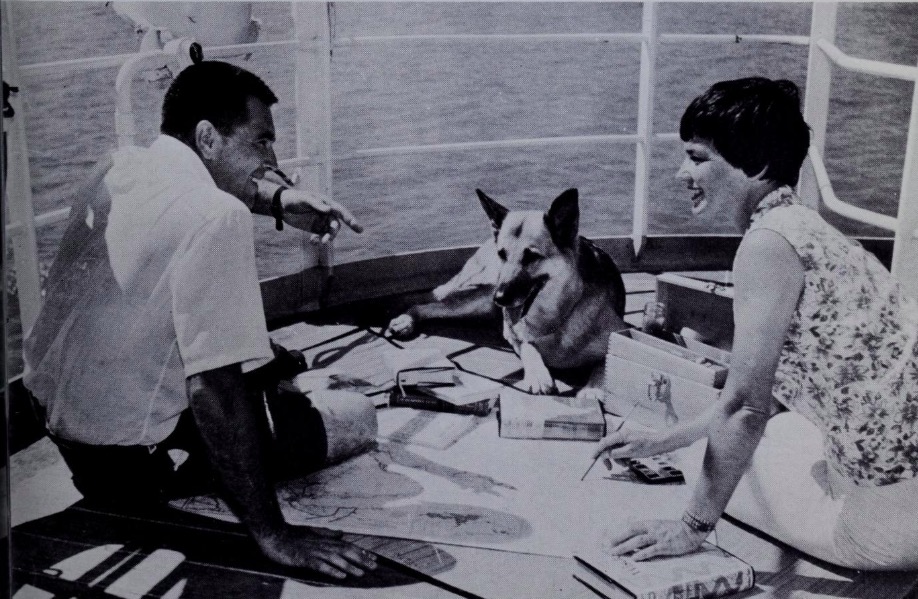
Life goals, relationship goals and travel goals rolled into one, do excuse me while I begin googling “amphibious jeep for sale.”
Image sources: Internet Archives (public domain), E Willys, Helen Schreider Facebook Page.







